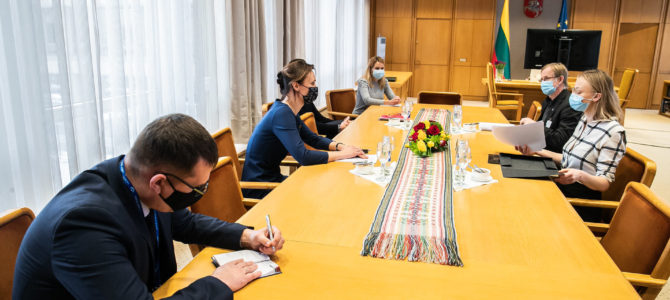by Mingailė Jurkutė, chief historian, Center for the Study of the Genocide and Resistance of Residents of Lithuania
The current director of the Genocide Center is trying to give the impression all that is happening are just internal department disputes, depot against depot, one faction of historians against another, or maybe historians vs. museum specialists, or maybe even brave, ambitious and mobile visionaries of the new administration against the academics at a small bureaucratic institution who long for stagnation and a light work-load. This is a terrific and naked lie.
Center historians are productive and their academic production and other specific Center production, for example, writing brief–barely two pages long–and exact findings of history, which often require examining just as much material as for an article in the normal academic format. And they want reform, they are proposing reforms themselves. This story is a very successful technique when you want misconstrue and hide what is going on, for example, as Soviet ideologues went to extremes to explain the partisan war was really a class war, or a civil war, and in any case… an internal social dispute.
But I want to return the real players (the sides) to center stage, because they are getting lost due to the noise, agitation and intentional mud-slinging (of which an example is the letter the administration drafted to defend the administration, not without pressure from direct bosses to staff to sign on in telephone calls made outside working hours, forcing employees to arrive in person at the workplace to sign in the midst of the pandemic).
I promised an article about two Noreikas. To those who were looking for information about Jonas Noreika, I tricked you with click-bait, you need read on no longer, this text is not about Jonas Noreika’s biography. For those reading to learn about the problems at the Genocide Center, I will further provide you two examples of the foundation of the problem which caused Genocide Center historians to raise objections.
1) In October of 2020 Genocide Center historian Dainius Noreika (a person I very much wanted to see in the partisan research project planned at the Genocide Research Center, but who after last week’s letter from the community of historians to boycott the Genocide Center I can only dream, as people in the late stages of the Brezhnev regime might have dreamed of a weekend in Paris) wrote a dissertation which finally allows us to untangle the topics of the Holocaust and the partisan war.
So, listen all you soldiers of the memory wars, there was a single basic Russian propaganda narrative of “history,” namely, that Lithuanian partisans were murderers of Jews, the partisan movement evolved into the ranks of Holocaust perpetrators. Noreika carefully examined the biographies of 1,000 partisans, including facts about their origins, education, activities between the wars and pre-WWII participation in different organizational structures including the police and auxiliary police, village self-defense, local teams of soldiers [“Vietinė rinktinė”] and so on.
The irreproachable work with sources (critique of sources) and the precisely-aimed research methods led to the presentation of a de-ideologized, empirically-based and reliable factual answer. Finally we can speak in terms of numbers and facts: about 5.8% of future partisans were involved in the persecution and mass murder of Jews. Following this incredibly precise study five years in the making, it is NO LONGER POSSIBLE to spread credible propaganda about the partisans’ genetic relations with the Holocaust. Finita la comedia.
Full opinion piece in Lithuanian here.


